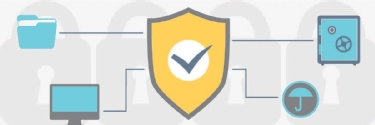Security
This cyber security glossary explains the meaning of terms about different types of computer security threats as well as words about application security, access control, network intrusion detection, security awareness training and computer forensics.

Authentication and access control
Terms related to authentication, including security definitions about passwords and words and phrases about proving identity.
-
What is Active Directory (AD)?
Active Directory (AD) is Microsoft's proprietary directory service that enables network admins to manage users, permissions and their access to networking resources.
-
What is an initialization vector?
An initialization vector (IV) is an arbitrary number that can be used with a secret key for data encryption to foil cyber attacks.
-
What is security automation?
Security automation uses technology to remove high-volume manual processes from security operations to detect cyberthreats, which saves time by integrating different workflows into repeatable processes.
Compliance, risk and governance
This glossary contains definitions related to compliance. Some definitions explain the meaning of words used in compliance regulations. Other definitions are related to the strategies that compliance officers use to mitigate risk and create a manageable compliance infrastructure.
-
What is a business continuity policy?
A business continuity policy is the set of standards and guidelines an organization enforces to ensure resilience and proper risk management.
-
What is sustainability risk management (SRM)?
Sustainability risk management (SRM) is a business strategy that aligns profit goals with a company's environmental, social and governance (ESG) policies.
-
What is a key risk indicator (KRI) and why is it important?
A key risk indicator (KRI) is a metric for measuring the likelihood that the combined probability of an event and its consequences will exceed the organization's risk appetite.
Network security
Terms related to network security, including definitions about intrusion prevention and words and phrases about VPNs and firewalls.
-
What is an initialization vector?
An initialization vector (IV) is an arbitrary number that can be used with a secret key for data encryption to foil cyber attacks.
-
What is a hacker?
A hacker is an individual who uses computer, networking or other skills to overcome a technical problem.
-
What is a web application firewall (WAF)? WAF explained
A web application firewall (WAF) is a firewall that is meant to protect web applications against common web-based threats.
Security Admin
Terms related to security management, including definitions about intrusion detection systems (IDS) and words and phrases about asset management, security policies, security monitoring, authorization and authentication.
-
What is a remote desktop and how does it work?
A remote desktop is a program or an operating system feature that allows a user to connect to a computer in another location, see that computer's desktop and interact with it as if it were local.
-
What is an initialization vector?
An initialization vector (IV) is an arbitrary number that can be used with a secret key for data encryption to foil cyber attacks.
-
What is a hacker?
A hacker is an individual who uses computer, networking or other skills to overcome a technical problem.
Threat management
Terms related to security threats, including definitions about anti-virus programs or firewalls and words and phrases about malware, viruses, Trojans and other security attacks.
-
What is an executable file (EXE file)?
An executable file (EXE file) is a computer file that contains an encoded sequence of instructions the system executes when the user clicks the file icon.
-
What is an initialization vector?
An initialization vector (IV) is an arbitrary number that can be used with a secret key for data encryption to foil cyber attacks.
-
What is a hacker?
A hacker is an individual who uses computer, networking or other skills to overcome a technical problem.